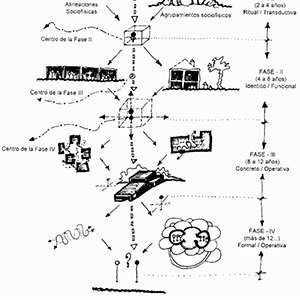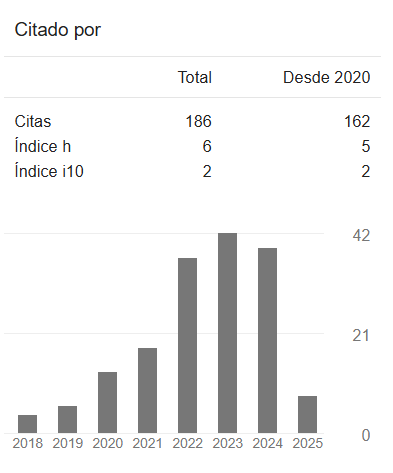The future of architect education after fifty years of research
DOI:
https://doi.org/10.35305/23626097v9i17.383Keywords:
architectural education, space and knowledge, social dimensions of architectural designAbstract
After fifty years of research on the future of architect education, it is time to make a synthesis of what has been found without attempting to conclude the subject at all, quite the contrary. This means glimpsing into the future from a complex present through the invaluable contribution of the data produced by the past. First, I analyzed architecture from a psychogenetic point of view and, later, from a more complex philosophical one, adding the Bakhtin’s neo-Kantian vision of the recent work of Paul Ricoeur that is grounded on a radical hermeneutics applied to an intersubjective vision of contemporary human space.
From this theoretical perspective, the recent involvement of the prestigious French philosopher Paul Ricoeur in the field of architecture and urban planning has become an important contribution to complete many years of work dealing with the psychogenetic analysis of the emergence of knowledge in architecture and urban planning in childhood across different countries. The aim is to expand the horizons of architecture teaching and urban planning towards the current state of cognitive sciences and the recent interdisciplinary neurological advances. In this way, a new teaching model in which innovation and culture are not contradictory concepts can suddenly come to light.
Downloads
Metrics
References
Bakthin, M. (1985). Speech genres and other late essays. Austin, USA: University Press.
Dehaene. S. (2020). How We Learn. Londres, Inglaterra: Penguin Books
Giedion, S. (1975). La arquitectura y los fenómenos de transición. Barcelona, España: Gustavo Gili.
Hillier, B. (1987). The social logics of space. Cambridge, UK: University Press.
Langer, J. (2003). Early Cognitive Development: Ontogeny and Phylogeny En J. Valsiner y K. Connolly (Eds.) The handbook of developmental psychology. Nueva York, Estados Unidos: Sage publications.
Martínez Gómez, J. N. (2019). Integración contemporánea con edificios antiguos. La intervención como síntesis histórica. (Tesis doctoral). Universitat Politècnica de Catalunya, Barcelona, España. Recuperado de https://upcommons.upc.edu/handle/2117/182134?show=full
Mumford, L. (1934). Technics and civilization. New York, USA: Harcourt.
Muntañola, J. (1974). La arquitectura como lugar. Barcelona, España: Gustavo Gili. Barcelona.
Muntañola, J. (1980). Developmental Architecture Cognition in Children´s conception of Place”. En G. Broadbent, R. Bunt y T. Llorens (Eds.) (1980). Meaning and Behavior in the Built Environment. Chichester, UK: Wiley and Sons.
Muntañola, J. (2016). Arquitectura y modernidad ¿Suicidio o reactivación? Barcelona, España: Universitat Politècnica de Catalunya.
Muntañola, J. (ed.) (2012). Arquitectura e investigación. Barcelona, España: Universitat Politècnica de Catalunya.
Muntañola, J. (ed.) (2021). The New Sense of Place. Barcelona, España: Universitat Politècnica de Catalunya.
Muntañola, J. (2022a). Lotman and Bakhtin in the architectural design theories of today. Human being: Image and essence. Humanitarian aspects, 49(1), 7-27. DOI 10.31249/chel/2022.01.01I. 30
Muntañola, J. (ed.) (2022b). Artificial intelligence for architects & designers. Barcelona, España: Universitat Politècnica de Catalunya.
Pollack, M. (1963). The Education of the Architect. Boston, Estados Unidos: MIT Press.
Ricoeur, P. (2001). Discurs d´acceptació del doctorat honoris causa. Comprendre: revista catalana de filosofía, 3(2), 97-99.
Ricoeur, P. (2000). La Memoire, l’Histoire et l´Oublie. Paris, France: Editions de Seuil.
Salama A, (2016). Spatial design education. Nueva York: Estados Unidos: Routledge Press.

Published
How to Cite
Issue
Section
License
Open access policy
A&P Continuidad is a non-profit and open access publication. According to Mexico Declaration on Cultural Policies, the journal distribution is submitted to Creative Commons Attribution-Noncommercial-ShareAlike 4.0 International Public License (CC BY-NC-SA). “Neither the commercial use of the original work nor that of the possible derivative works are allowed. The distribution of derivative works should be submitted to the license regulating the original work. This license is not free.”
A&P Continuidad authorizes the partial or full reproduction of texts and graphs provided that the source is cited. Authors are exclusively responsible for the criteria expressed in the articles which do not necessarily reflect the opinion of the Editorial Committee or that of the Direction Board. The copyright of the published articles pertains to their authors or publishers.
Transfer of rights
The acceptance of an article to be published implies the author’s transfer of rights to the journal. Authors continue to have the right to use the material in future books or publications, approve or veto the republication of their works as well as the rights related to patents or other rights. Transfer of rights form may be downloaded here.





























 This OJS site and its metadata are under a
This OJS site and its metadata are under a 

